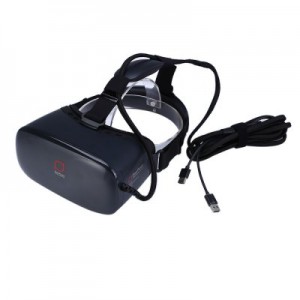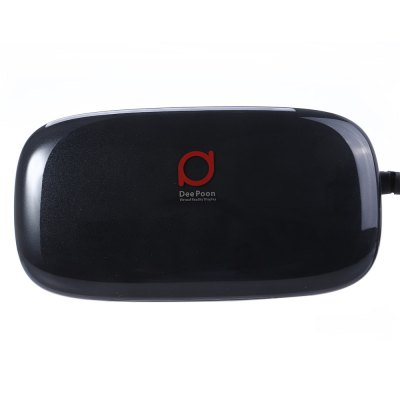It’s no secret that virtual reality (VR) is a hugely popular medium in China. Numerous manufacturers have launched their own versions of the Google Cardboard style smartphone holder and a few have taken a stab at a tethered PC-based device. One such company is Deepoon, who have made available their latest head-mounted display (HMD), the Deepoon E2, this summer. It’s a curious beast, mimicking the Oculus Rift while attempting to cover new ground.
Palmer Luckey, creator of the Oculus Rift, joked on stage at Oculus Connect, Hollywood, back in 2014, that the announcement of open-sourcing the Oculus Rift DK1 technology would lead to an influx of Chinese HMDs. Of course he was right, but Deepoon’s designs standout from the crowd thanks to their sleek look and high-end components. However, next to the Oculus Rift or HTC Vive, even the E2 has significant issues.
The first which western gamers will encounter is that of the headstrap. Designed for smaller heads, the strap is only extendable to a very limited capacity, and as such it simply won’t fit much of the western audience. This is arguably a result of Deepoon’s target market: the device is aimed at a specific demographic, with international sales less of a concern. This, too, is evident in the software provided by the manufacturer.
Though the installation process provides an option for English language installation (amongst others) the end user license agreement (EULA) and client are still presented in Chinese. It’s easy to navigate the different sections of content offerings and system preferences – albeit in broken English – but many of the experiences offered don’t translate their names, and as such using Deepoon’s own client is often a case of potluck: download something, see whether it’s what you expected once installed.

Once software is available the quality of the experience changes dramatically. The Deepoon E2 boasts an impressive field-of-view (stated to be 120 degrees, though feeling slightly shy of that) a high quality 1080x 1920 AMOLED screen and very precise head tracking. Sadly, the device does not feature positional tracking, leaving it leagues behind the Oculus Rift, HTC Vive and PlayStation VR.
Essentially the Deepoon E2 sits somewhere between the Oculus Rift development kits, DK1 and DK2. With the quality visuals and design of an Oculus Rift DK2 yet lacking the importance of positional tracking, the Deepoon E2 is a clearly inferior product to the Oculus Rift consumer version, but at the same time is available for approximately half the current price. Given that the Oculus Rift DK2 is no longer available for purchase, the Deepoon E2 acts as an entry level tethered device: superior to the mobile Samsung Gear VR but the lesser of the PC-based HMDs.
The Deepoon E2 is available to purchase worldwide from Gearbest now, and in the US only from Amazon.com, priced at around $300 USD. It should be noted that installation of the Deepoon E2 requires an earlier Oculus runtime than the Oculus Rift consumer version, and thus both cannot be used at the same time. However, it’s unlikely anyone who has reached the dizzy heights of Oculus Rift purchase would be interested in taking a step backwards with the Deepoon E2.















